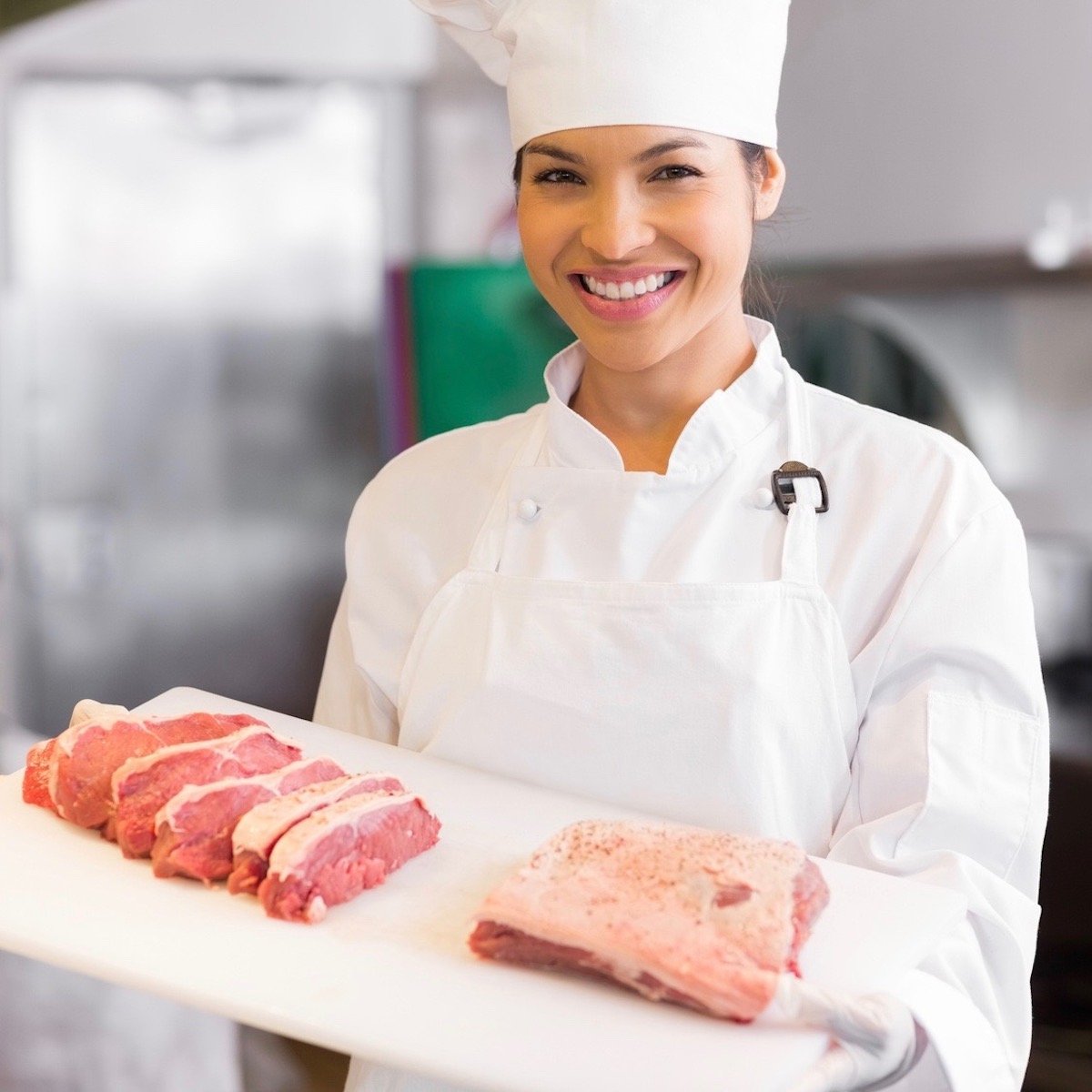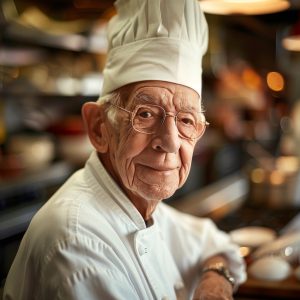Do You Need Culinary Training to Become a Butcher?
Almost all great chefs have butchering skills. You’ve seen them on television and in the kitchen—with a huge knife and a lot of speed; these professionals go to work breaking down whole chickens, de-boning fish, and taking apart huge cuts of beef.
In a good culinary arts program, butchering will be part of the curriculum—if not a whole class, then at least a large part of one. That’s because butchering, like any prep work, is important for getting the right flavors, portion sizes, and consistency in cooking times.
However, butchering, as a profession, is a lot more than just breaking down a few chickens. The butchers you see working at grocery stores, specialty shops, and industrial processing plants know how to use various tools (knives, grinders, saws) and can create large quantities of products that retain quality throughout their distribution.
What Is A Butcher?
In the heart of the bustling market, amidst the vibrant chaos of commerce, stands a figure commanding attention with every deft slice and resounding thud of cleaver meeting block. This is the butcher, a master of his craft, a purveyor of prime cuts and culinary artistry. With sleeves rolled up and apron stained with the evidence of his labor, he embodies the essence of tradition and skill.
There’s a rhythm to his movements, a dance of precision and expertise honed over years of practice and dedication. His or her weathered and calloused hands possess an innate understanding of anatomy, effortlessly separating flesh from bone with practiced ease. Each cut is deliberate, each portion meticulously weighed and prepared to perfection.
Behind the counter, an array of meats glistens under the soft glow of overhead lights, a tantalizing display that beckons customers with promises of gastronomic delight. From succulent steaks to succulent sausages, the butcher’s offerings cater to every palate and preference, sourced from the finest livestock and treated with the utmost care.
But it’s not just his skill that sets them apart; it’s their passion. Butchery is more than just a job—it’s a calling, a vocation rooted in a deep-seated love for the craft. They take pride in his work, deriving satisfaction from the knowledge that he is vital in nourishing the community, providing sustenance in its most primal form.
Yet, amidst the bustle of the market, the butcher remains a beacon of tranquility, their demeanor calm and composed as he tends to his trade. They greet each customer with a warm smile and a friendly word, fostering a sense of camaraderie that transcends mere transactions.
In an age of mass production and impersonal service, the butcher stands as a testament to the enduring value of craftsmanship and human connection. They are not just a purveyor of meat but a guardian of tradition, preserving the time-honored art of butchery for generations to come. And as long as there are mouths to feed and palates to satisfy, their place in the market will remain secure, a steadfast pillar of culinary excellence.
Where to Learn to be a Butcher
Learning to be a butcher involves formal training, hands-on experience, and a deep understanding of meat and its preparation. Apprenticeships have traditionally been a common route into the profession, although today, there are various avenues one can take to become a butcher.
- Apprenticeships: Many aspiring butchers still choose to learn through apprenticeship programs, where they work under experienced butchers to gain practical skills and knowledge. These apprenticeships can last anywhere from a few months to a few years, depending on the depth of training desired.
- Trade Schools: Some vocational schools offer programs specifically designed to train individuals in the art of butchery. These programs typically cover topics such as meat-cutting techniques, food safety, and meat science. They provide a more structured and formal education than apprenticeships.
- On-the-Job Training: Some individuals enter the field by starting in entry-level positions at grocery stores, butcher shops, or meat processing plants. Through on-the-job training, they gradually learn the skills and techniques necessary to become proficient butchers.
- Online Courses and Resources: With the rise of online education, courses and resources covering various aspects of butchery, from basic knife skills to advanced meat fabrication techniques, are now available. While these may not provide hands-on experience, they can supplement other forms of training and education.
- Specialized Programs: Some colleges and universities offer specialized programs in meat science or processing, which cover a wide range of topics related to meat production, quality assurance, and butchery.
Becoming a skilled butcher requires dedication, attention to detail, and a passion for the craft, regardless of the path chosen. It’s not just about cutting meat; it’s about understanding different cuts, maximizing yield, ensuring food safety, and providing excellent customer service. Continuous learning and staying updated on industry trends and techniques are also essential for success in this dynamic field.
Do Culinary Schools Teach Butchery?
The extent to which culinary schools teach butchery can vary depending on the specific program and its focus. However, many culinary schools include butchery as part of their curriculum, especially in programs emphasizing classical culinary techniques, culinary arts, or culinary management. Here’s an overview of what you might expect to learn about butchery in culinary school:
- Basic Knife Skills: Culinary schools typically start by teaching students fundamental knife skills, including proper knife handling and care, different types of cuts (such as julienne, dice, and chiffonade), and basic meat fabrication techniques.
- Understanding Cuts of Meat: Students learn about different cuts of meat, including their characteristics, flavors, and appropriate cooking methods. This includes beef, pork, lamb, poultry, and sometimes game meats or specialty cuts.
- Butchery Techniques: Culinary programs often cover basic butchery techniques, such as breaking down whole animals into primal cuts, deboning poultry, and portioning meat for cooking. Depending on the program’s emphasis and duration, students may also learn more advanced techniques like Frenching racks of lamb or boning out a leg of pork.
- Meat Fabrication: Besides butchery, students may learn about meat fabrication, which involves further processing primal cuts into retail cuts or specialty products like sausages, ground meat, and cured meats.
- Food Safety and Sanitation: Proper food handling, storage, and sanitation practices are crucial in butchery. Culinary schools typically teach students about food safety regulations, HACCP principles, and best practices for preventing contamination and foodborne illness.
- Menu Development and Cooking Techniques: While not directly related to butchery, culinary programs often teach students how to incorporate different cuts of meat into menus and how to cook them using various techniques, such as grilling, roasting, braising, and sous vide.
While culinary schools may not offer as comprehensive a butchery education as dedicated butcher apprenticeships or specialized meat processing programs, they provide students with a solid foundation in meat handling and preparation that prepares them for careers in the culinary industry.
















3 Responses
I want to learn more about being a master butcher
I want more skills as master butcher
This article is worthy of recognition and comment. I found this material attention-grabbing and engrossing. This is well-scripted and highly informative. These views appeal to me. This is how real writing is done. Thank you.